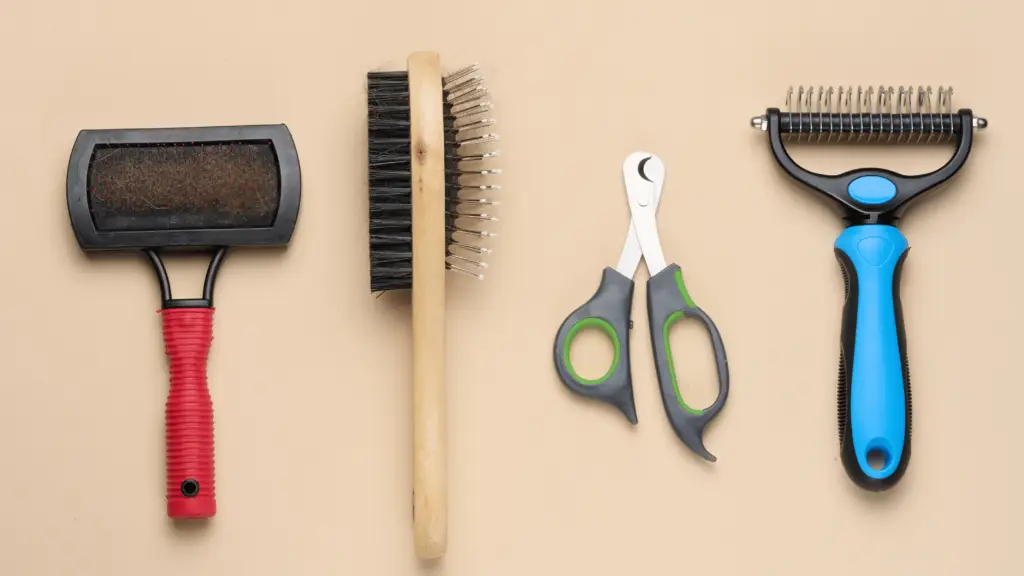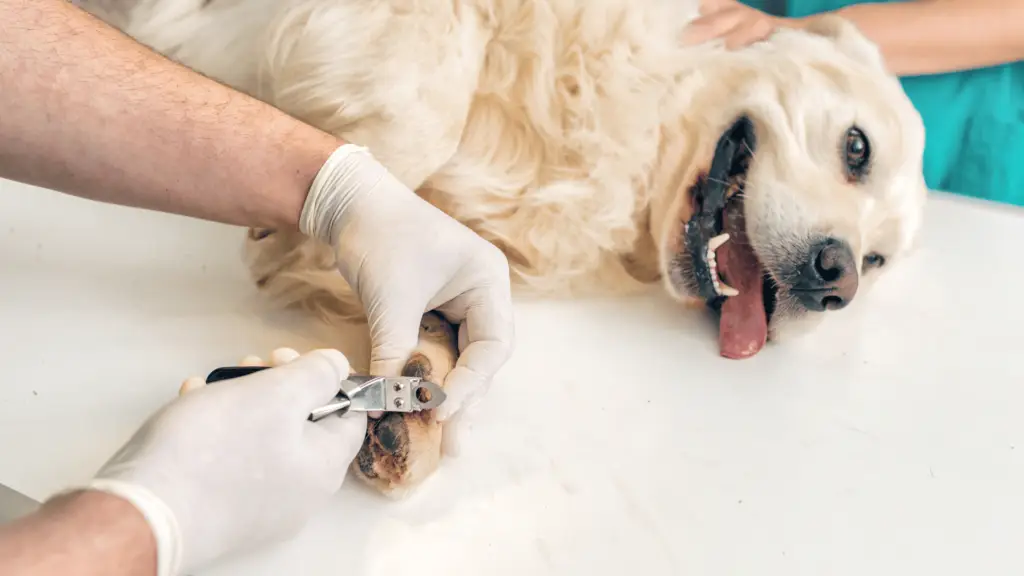
Introduction
Trimming your dog’s nails is more than just a simple groom; it is a part of their health care. Trimming the nails on a regular basis can help avoid many potential health problems with your pet. In this detailed guide, we’ll walk through everything from dog nail trimming basics to some of the best practices in trimming and maintaining healthy nails for your furry friend.
Understanding Dog Nails

Anatomy of Dog Nails
Dog nails, unlike human nails, have a blood vessel and nerve running through the center, known as the quick. The quick supplies blood to the nail and can cause bleeding if cut. Understanding the structure of your dog’s nails is crucial for safe trimming.
Why Dog Nails Grow
Dog nails grow continuously, much like human nails. They serve various purposes, such as aiding in traction while walking and digging. However, if they grow too long, they can cause discomfort and health issues.
Why Regular Dog Nail Trimming is Essential
Health Benefits
Regular nail trimming prevents nails from curling into the paw pads, which can cause pain and infections. It also helps avoid broken or split nails, which can be painful and prone to infection.
Prevention of Injuries
Long nails can alter your dog’s posture and gait, leading to joint pain and other musculoskeletal issues. They can also cause scratches to floors and furniture, and in some cases, accidental injuries to humans.
Behavioral Benefits
Trimming your dog’s nails regularly can reduce their anxiety and stress associated with long nails. It also makes them more comfortable during walks and other activities.
How to Prepare for Dog Nail Trimming
Tools You Will Need

- Dog nail clippers or grinders
- Styptic powder (to stop bleeding if you cut the quick)
- Treats for positive reinforcement
- A towel or blanket for comfort
Creating a Calm Environment
Choose a quiet, comfortable place where your dog feels safe. This will help minimize stress and make the process smoother.
Familiarizing Your Dog with the Tools
Let your dog sniff and explore the nail clippers or grinders before you start. Reward them with treats to create a positive association with the tools.
Step-by-Step Guide to Trimming Your Dog’s Nails
Inspecting the Nails
Check each nail for any signs of damage or infection. Ensure the nails are clean and dry before trimming.
Finding the Quick
For dogs with light-colored nails, the quick is usually visible as a pink area within the nail. For dogs with dark nails, you may need to trim small amounts gradually until you see a dark spot in the center, indicating the beginning of the quick.
Proper Trimming Technique
Hold your dog’s paw firmly but gently. Clip the nail below the quick at a slight angle. For grinders, gently file the nail until it’s just above the quick.
Dealing with Common Challenges
Handling a Fearful Dog
If your dog is anxious, take breaks and offer plenty of praise and treats. Consider seeking help from a professional if necessary.
What to Do if You Cut the Quick
Stay calm and apply styptic powder to the nail to stop the bleeding. Reassure your dog and give them a treat.
Managing Thick or Dark Nails
Use a grinder for thick nails, as it provides more control and reduces the risk of cutting the quick. For dark nails, trim small amounts gradually.
When to Seek Professional Help
Signs You Need a Professional Groomer

If your dog becomes extremely stressed or aggressive during nail trimming, or if you’re unsure about the process, it may be best to consult a professional groomer or veterinarian.
How Often to Visit a Professional
Dogs with fast-growing nails or those with special needs may require more frequent visits to a groomer. Generally, a professional trimming every 4-6 weeks is sufficient.
Maintaining Your Dog’s Nails Between Trimmings
Regular Check-ups
Inspect your dog’s nails weekly to ensure they remain at a healthy length. Address any issues promptly.
Alternative Methods for Nail Care
Consider using nail grinders, which can be easier for some dogs to tolerate. Regular walks on hard surfaces can also help keep nails naturally filed.
Signs of Healthy Nails

Healthy nails are smooth and not overly long. The quick should not be visible from the outside.
Common Myths About Dog Nail Trimming
Myth: dog Nail Trimming is Painful
When done correctly, nail trimming is painless. The key is to avoid cutting the quick.
Myth: Only Professionals Should Trim Dog Nails
With proper knowledge and tools, most dog owners can trim their dog’s nails at home.
Myth: Dogs Don’t Need Regular Nail Trimming
Regular nail trimming is essential for preventing health issues and ensuring your dog’s comfort.
Special Considerations for Different Dog Breeds
Small Breeds vs. Large Breeds
Small or Rare Breeds may require more frequent trimming due to faster nail growth. Large breeds often have thicker nails that need careful handling.
Dogs with Dewclaws
Dewclaws, located on the inner side of the paw, require regular trimming as they do not wear down naturally.
Senior Dogs
Older dogs may have brittle nails that need extra care. Trim gently and regularly to avoid splitting.
The Role of Diet in Nail Health
Nutrients for Strong Nails
Ensure your dog’s diet includes biotin, omega-3 fatty acids, and zinc, which are vital for nail health.
Foods to Include in Your Dog’s Diet
Incorporate fish, eggs, and leafy greens into your dog’s diet to promote strong, healthy nails.
Nail Grinding vs. Nail Clipping
Pros and Cons of Each Method
- Nail Grinding: Provides smooth edges, less risk of cutting the quick, but can be noisy.
- Nail Clipping: Quicker, but higher risk of cutting the quick and causing bleeding.
Which is Better for Your Dog?
Choose the method that your dog is most comfortable with. Some dogs prefer the quietness of clippers, while others tolerate grinders better.
DIY Dog Nail Trimming Stations
Setting Up a Trimming Station at Home
Create a designated area with all your tools organized and within reach. Ensure the space is comfortable for your dog.
Tips for an Effective Setup
Use a non-slip mat to prevent your dog from slipping. Have treats and styptic powder handy.
Conclusion
Regular dog nail trimming is crucial for your dog’s health and well-being. By understanding the process and following the steps outlined, you can keep your dog’s nails in top shape, ensuring they stay happy and comfortable.